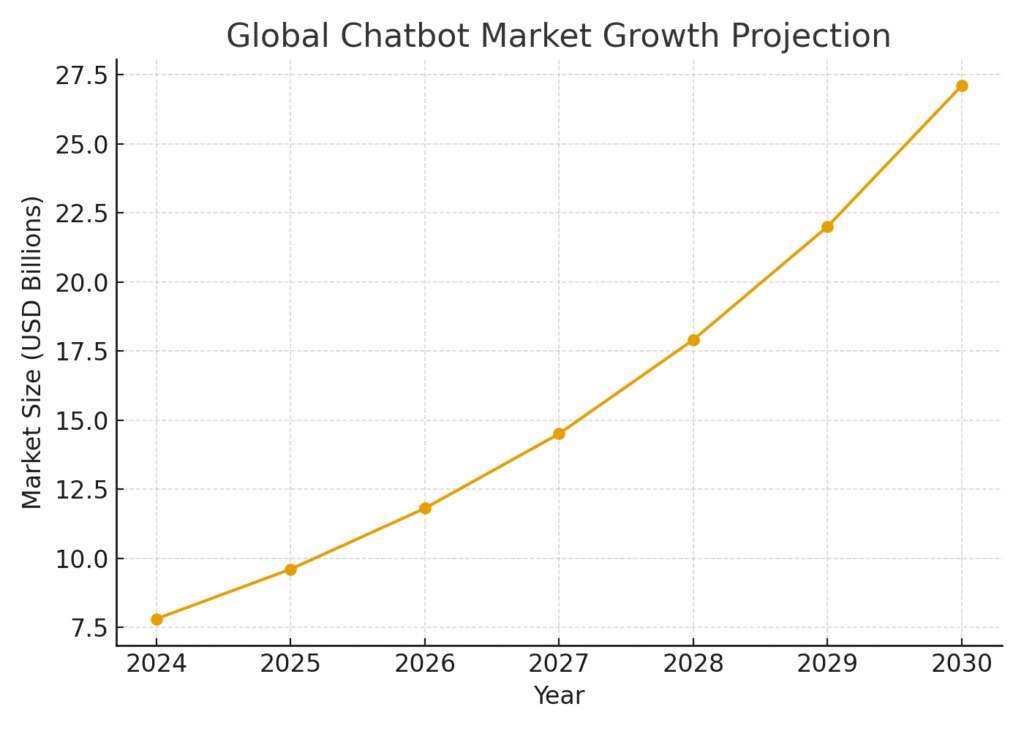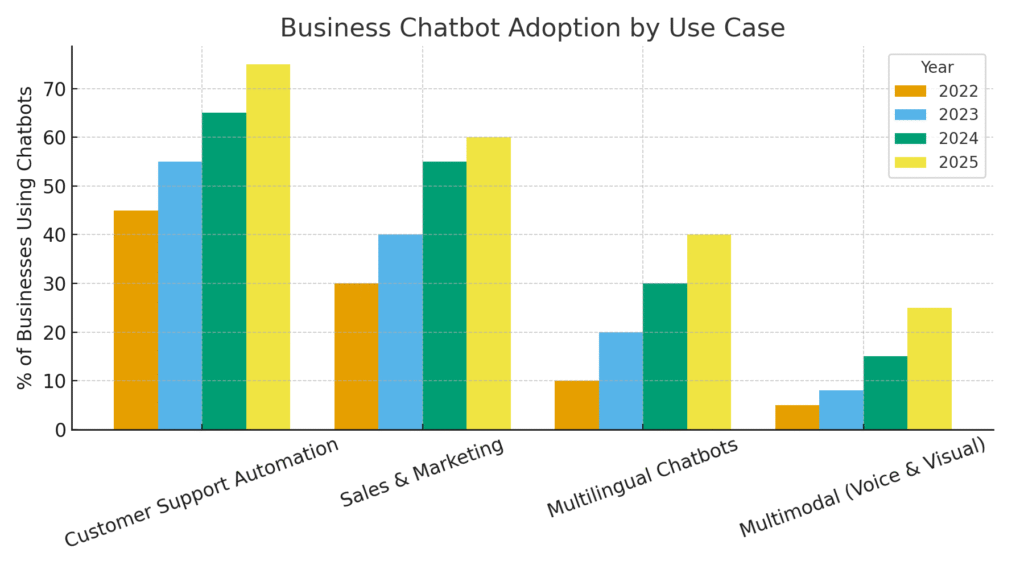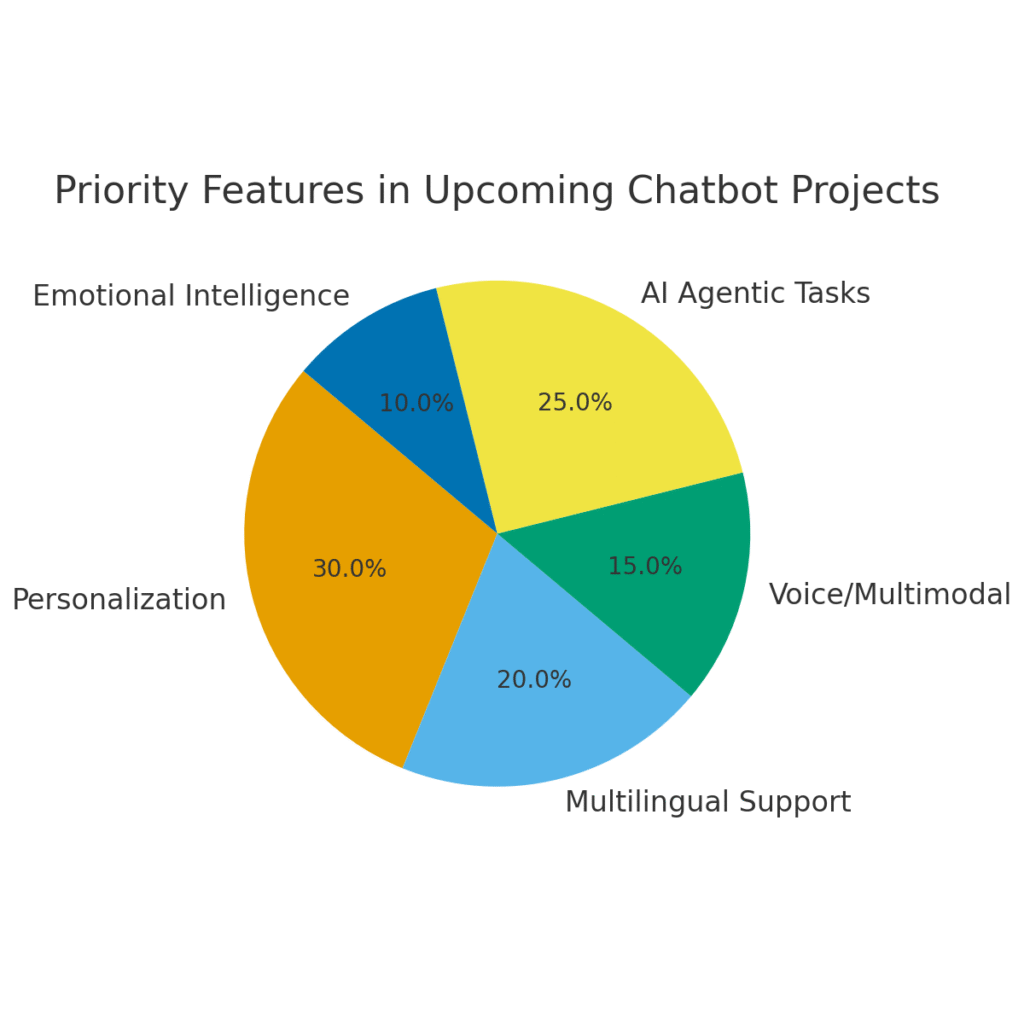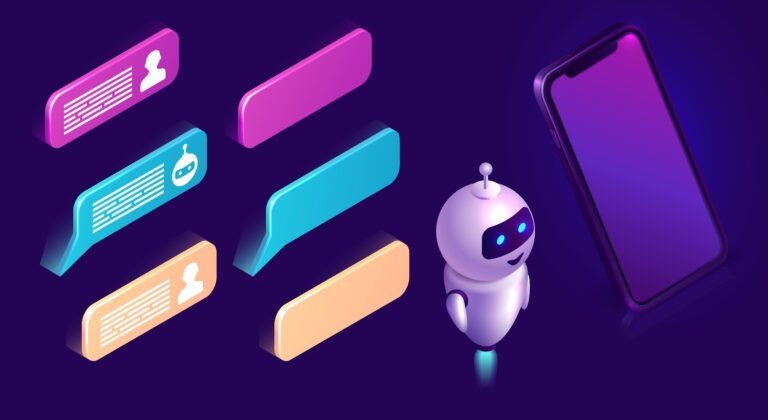What would the future of AI-powered chatbots in business look like? See how they boost productivity, cut costs, and revolutionise customer engagement.
Imagine walking into an airport and being greeted not by a human gate agent, but by a friendly digital assistant that already knows your flight details, checks you in, and guides you to your gate. That may sound futuristic, but in business, AI-powered chatbots are already doing incredible things. According to CHI Software, the chatbot market is expected to reach USD 7–8 billion in 2024 and grow at a compound annual growth rate (CAGR) of 20–25% through 2029.
This growth reflects how businesses across industries are embracing conversational AI as a core part of their customer experience strategies. From automating booking systems in travel and hospitality to handling thousands of support queries per hour in e-commerce, chatbots are no longer side tools—they are becoming front-line representatives of brand identity. Once hesitant, companies are now investing heavily, seeing chatbots as a competitive advantage that can lower operational costs while increasing customer satisfaction at scale.
Let’s dive into what’s happening now, what’s coming next, and why you should pay attention.
What’s the Buzz About Chatbots?
Businesses love chatbots because they can handle many conversations at once, do it 24/7, and with minimal human supervision. AI chatbots—especially those powered by generative models and natural language understanding—are no longer just Q&A machines. They help with sales, support, personalisation, trend prediction, and much more. This shift has been driven by the dramatic improvements in Natural Language Processing, allowing bots to understand intent, context, and even tone far better than a few years ago.
For example:
- 24/7 availability reduces customer wait times and frustration.
- Personalisation allows bots to remember your preferences and tailor responses.
- Multilingual support helps companies scale globally without needing staff who speak every language.
Many companies are embedding chatbots directly into mobile apps, websites, and social channels to reduce human workload and speed up response times. ADA Global notes that chatbots will soon blend into customer service so naturally that users won’t remember whether they were talking to a bot or a person—at least for simple tasks.
Key Trends Shaping the Future
Here are some of the biggest trends to watch. Nearly every business planning a chatbot strategy in the next few years will need to think about these. Each trend reflects how chatbots are shifting from reactive to proactive assistants:
| Trend | What It Means | Why It Matters |
|---|---|---|
| Hyper-Personalization | More inclusive; fits mobile, accessibility, and hands-free use cases. | Builds trust, increases engagement; people expect service tailored to them. |
| Multimodal Interaction | Voice, video, even images, not just text. | Understanding user mood via sentiment, voice, and facial cues. |
| Agentic AI | Bots that can initiate tasks, not just respond. | Enables automation of workflows, such as booking, scheduling, or proactive support. |
| Emotional Intelligence | Medical, legal, financial, etc., with specialised training. | Makes interactions more human; improves user satisfaction. |
| Niche & Industry-Specific Bots | Accuracy, reliability are crucial; regulators and users demand correctness. | Compliance, customer trust, and avoiding backlash. |
| Ethical & Secure AI | Privacy, data governance, model transparency. | Compliance, customer trust, avoiding backlash. |
These trends are reshaping how businesses think about automation—not just as cost-saving but as experience-enhancing. For instance, CHI Software reports that the chatbot market “reached USD 7.76 billion in 2024 and is set to skyrocket with a 23.3% CAGR from 2025 to 2030”.

What Businesses Are Getting Right
- Unified Data & Context Awareness: Chatbots connected with company data, CRMs, intranets, etc., which allows for more coherent responses. This integration allows bots to pull from multiple knowledge bases and produce answers that are consistent, current, and relevant. Coveo stresses the importance of making data accessible and avoiding “data silos”, which limit a bot’s usefulness.
- Clear Bot Purpose and Roadmap: The best bots are built with clear goals (e.g., order support, FAQ, upselling) and a plan to expand. Defining the scope helps set realistic user expectations and prevents scope creep.
- Incremental Deployment: Start small, measure impact, iterate. Rather than aiming for perfection from the beginning, companies are discovering success by rolling out essential features first. This approach makes it easier to gather feedback, tweak flows, and avoid major upfront costs.
When companies follow these principles, chatbots evolve as valuable business assets instead of one-off experiments that fade away after launch.
What’s Holding Back Chatbots Today
Yep, it’s not all smooth sailing. There are some real challenges:
- Fragmented Context & Data
Many systems keep data in different silos—support docs, CRM, website content—that are not well integrated. Without unified access, chatbots struggle to give complete answers. - User Trust & Emotion
Humans expect empathy. Current models may answer correctly, but when tone matters—like when someone is upset—the interaction can feel robotic. - Complex Problems vs Simple Tasks
Chatbots handle FAQs and simple transactions well. More complex problem resolution often still needs human judgment. - Misalignment of Expectations
Some bots are oversold. Stakeholders expect “AI that handles everything”, but reality is still partial: reactive rather than proactive, text-based rather than multimodal. - Ethical, Security, Legal Issues
Privacy, misuse of data, algorithmic bias, and lack of transparency remain concerns. Businesses must comply with regulations such as GDPR and CCPA.
These hurdles show why chatbot success is less about flashy tech and more about strategy, design, and governance.
Statistical Backing & Business Impact
Let’s look at some recent data:
- 80% of users report positive experiences with chatbot interactions; 14% say very positive (CHI Software).
- Only 4% of responses are “very negative.”
- During peak traffic, chatbots reduce the inflow of human support tickets by 30-50%, freeing humans for harder issues.
- The voice assistant market alone is projected to reach USD 99 billion by 2026, up from about USD 4.6 billion in 2021.

Sample Usage Trend Chart
| % of Businesses Using Chatbots | 2022 | 2023 | 2024 | 2025 (predicted) |
|---|---|---|---|---|
| Customer Support Automation | 45% | 55% | 65% | 75% |
| Sales & Marketing Chatbot Deployments | 30% | 40% | 55% | 60% |
| Multilingual Chatbots | 10% | 20% | 30% | 40% |
| Multimodal (Voice & Visual) | 5% | 8% | 15% | 25% |

What to Look Out for in the Near Future
If you are thinking about deploying or working with AI chatbots in the next year or two, watch for:
- Agentic / Action-Oriented Bots: Bots that do more than respond—booking, acting on behalf of users, initiating tasks.
- Better Memory & Context Retention: Long-term user context, remembering past interactions in a way that feels human.
- Regulatory Pressure: Data privacy laws, transparency, and ethical AI guidelines will be stricter.
- More Multimodal Interfaces: Think voice + image + video + avatars.
- Cost vs ROI: Businesses will increasingly ask: “What measurable gain did that chatbot deliver?”
Advice If You’re Considering Implementing One
- Start with clear goals.
- Pick the right technology stack (NLP, language models, knowledge base).
- Make sure your data is organised and accessible.
- Invest in continuous improvement—monitor, gather feedback, fix what fails.
- Keep humans involved for complicated tasks and in escalation paths.
Conclusion
The future of AI-powered chatbots in business is exciting. The capabilities are increasing fast: from mere FAQ bots to proactive agents with memories, emotional awareness, and multimodal interfaces. According to projections, the chatbot market is growing strongly, with business sectors from e-commerce to healthcare adopting them broadly.
But it’s not silver bullet territory—expect hurdles in data, trust, complexity, and ethics. What matters most is that you approach chatbot strategy thoughtfully: purposeful design, clear goals, strong data integration, and human-centric values.
Do that, and chatbots will stop feeling like conveniences and become real assets in your business toolbox.
FAQs
What is the future of AI-powered chatbots?
The future of AI-powered chatbots is set to move beyond answering basic questions to becoming proactive digital assistants that can execute tasks. They will handle complex processes like booking appointments, processing transactions, and giving personalised recommendations.
According to a report by MarketsandMarkets, the global chatbot market is expected to grow from USD 5.4 billion in 2023 to USD 15.5 billion by 2028 at a CAGR of 23.3%, showing how quickly they’re evolving. Future chatbots will also use emotional intelligence and multimodal inputs (voice, images, video) to make conversations more natural and human-like.
How are AI chatbots shaping the future of businesses?
AI chatbots are reshaping how businesses engage with customers by offering 24/7 support, reducing operational costs, and improving customer satisfaction. They automate routine tasks like order tracking, FAQ responses, and appointment scheduling—freeing human staff to focus on complex cases.
A study by IBM reveals that businesses using AI chatbots saw a 30% reduction in customer service costs and a 70% improvement in response times. This ability to improve speed and reduce costs makes them essential tools for scaling businesses efficiently while enhancing customer experiences.
What is the future of AI in business?
AI is expected to become deeply embedded across every business function, from marketing and finance to HR and supply chain management. AI will provide real-time data analysis, predictive analytics, and intelligent automation, allowing organisations to make faster and smarter decisions.
According to PwC, AI could contribute up to $15.7 trillion to the global economy by 2030, with productivity improvements accounting for over half of this value. Businesses that embrace AI early are likely to gain a significant competitive advantage in efficiency, innovation, and customer experience.
Are AI chatbots in demand?
Yes — AI chatbots are experiencing surging demand as companies look for scalable ways to offer instant, personalised support to customers worldwide. They are widely used in retail, banking, travel, healthcare, and education.
A report from Statista shows that the global chatbot market is forecast to grow from USD 7.1 billion in 2024 to over USD 20 billion by 2030. This rapid growth highlights how chatbots are becoming core to digital business strategies, driving both customer engagement and operational efficiency.




